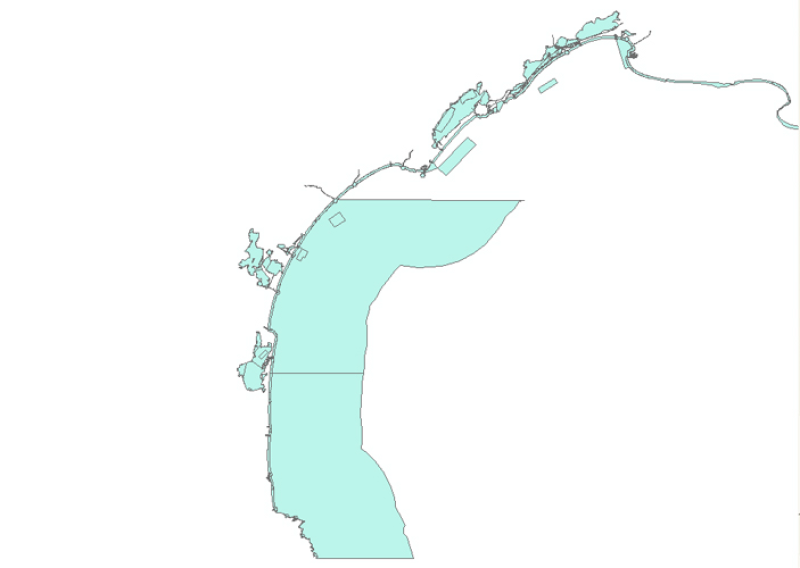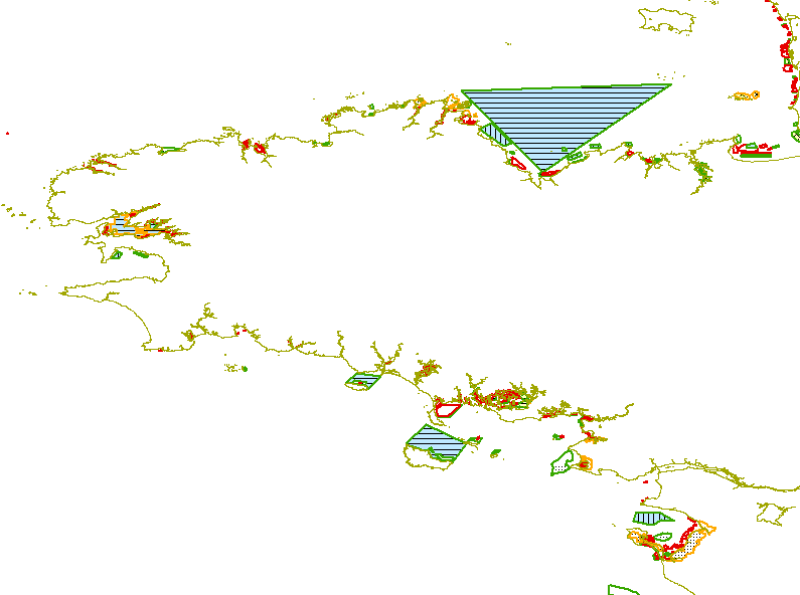conchyliculture
Type of resources
Available actions
Topics
Keywords
Contact for the resource
Provided by
Years
Formats
Representation types
Update frequencies
status
Service types
Scale
-
This map shows the different Fisheries Local Action Groups (FLAGs) mobilised by the implementation of Axis 4 of the European Fisheries Fund (EFF) to design and implement integrated local development strategies for the sustainable development of fisheries areas. The FARNET Support Unit acts as a platform for networking between fisheries areas and as support for the FLAGs. Links to related websites are displayed when a FLAG is clicked.
-

L'Atlas des zones conchylicoles françaises présente les zones conchylicoles et leur classement sanitaire. Celui-ci est établi sur la base des arrêtés préfectoraux de classement, fournis par les Directions Départementales des Affaires Maritimes (DDAM). Déterminés sur la base des résultats d¿analyses menées sur les coquillages de la zone concernée, ces classements sont le reflet de la qualité microbiologique des coquillages présents et de leur contamination en métaux lourds. Ressource en ligne : https://www.sandre.eaufrance.fr/atlas/srv/fre/catalog.search?currTab=simple%20pour%20les%20zones%20conchylicoles&id=608#/metadata/6362596f-29d2-4e94-af9b-04283841e3f7 https://www.atlas-sanitaire-coquillages.fr/classements-sanitaires
-
OYSTERCOVER (http://oysterecover.eu/) : Establishing the scientific bases and technical procedures and standards to recover the European flat oyster production through strategies to tackle the main constraint, bonamiosis. The European flat oyster has been part of the human diet for many centuries. High mortality episodes and overfishing decimated the populations of O.edulis in Europe through the first half of the 20th century. Then, two diseases (due to Marteilia refrigens and Bonamia ostreae) spread in early 1970s and 1980s, drastically reducing the production. Despite the new management practices and intensive repletion programmes, the production of O. edulis has remained low since that time. The recovery of European flat oyster production could be an important opportunity for the shellfish industry in Europe.A total of five shellfish producers’ associations from four different Member States and three SMEs in major oyster production countries in Europe, concerned about the above mentioned issues and being aware of recent scientific progress in selective breeding programmes for bonamiosis tolerance, have decided to work together with the common general objective of facing the challenge of establishing the scientific and technical bases, procedures and standards that allow the recovery of the O. edulis production, through the development of strategies to tackle the main constraint, bonamiosis. To successfully achieve this goal those European research centres and universities which have mainly contributed to scientific progress on O. edulis recovery and selective breeding programmes for bonamiosis resistance, are hired by the SME-AGs and the SMEs involved in the project, to carry out the relevant research. This layer concern the map of the partners involved in OYSTERECOVER
-
REPROSEED, « REsearch to improve PROduction of SEED » is a European project conducted by partners from several countries that aim to promote the development of the mollusc aquaculture such as Spain, Portugal, France and Norway. Mollusc farming is important as this industry is expected to contribute significantly to the European economy in the coming years. REPROSEED (http://www.reproseed.eu/) give a list of European hatcheries. EUROSHELL offers a map of that list.
-
Shellfish farming areas can have different meanings. Sometimes their identification is prescribed and used for health classification of production areas. In Euroshell project, the choice was made to map the production areas whose identification makes sense for both scientists and professionals. A limited number of areas is then showed, often corresponding to a hydrographic reality. Indeed, the shellfish industry is mainly installed in estuaries, river mouths, bays, fjords, estuaries or lagoons. This map shows the shellfish production sites, which include several areas. Some information is given on species produced, the number of companies and / or concessions and / or producers, the approximate amount of production.
-
The two core objectives of BIVALIFE are : - to provide innovative knowledge related to pathogens infecting oysters and mussels and - to develop practical approaches for the control of infectious diseases and resulting mortality outbreaks these pathogens induce. This layer concerns the sampling sites.
-
In order to bridge the gap between shellfish growers and scientists, a layer is built with the list of organizations thatproduce or transfer knowledge in the shellfish sector. Academic or applied research centers, experts, training and education sector, monitoring networks and regional centers are recorded and data are collected on their size, address, website link, fundings, etc.
-
Localization of professional organizations linked to shellfish farming within Euroshell project
-

Le lot de données contient les enveloppes des zones d'élevage conchylicole existantes et potentielles par département sur l'ensemble du littoral français.
-

Données présentant le coût des études en appui à la profession conchylicole du CREPALMAR.
 Catalogue PIGMA
Catalogue PIGMA